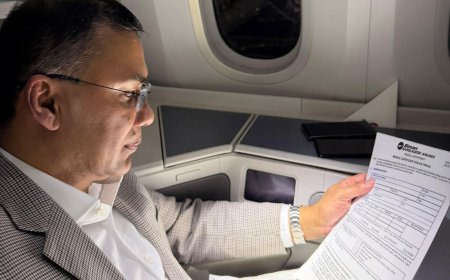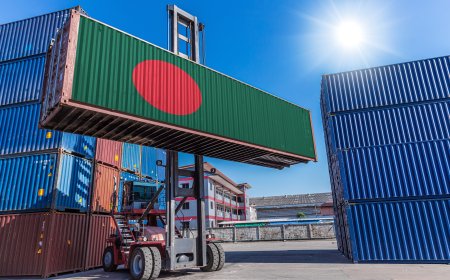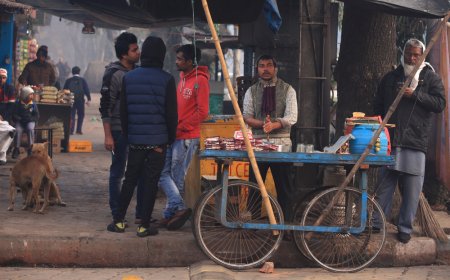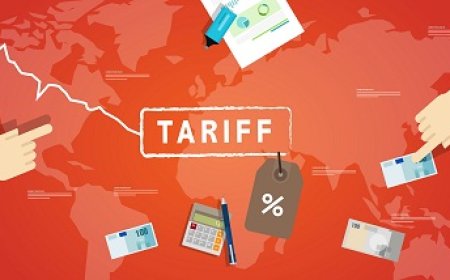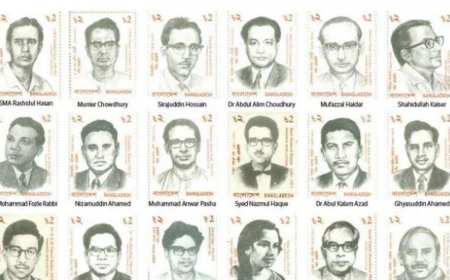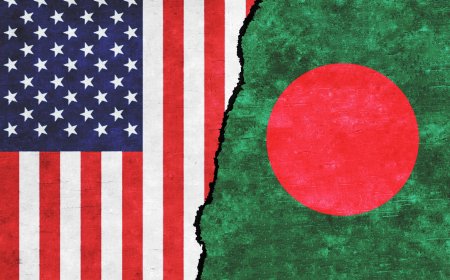Your Home in the Sky and the House in Disarray
It is long past due for Biman to start fulfilling its potential and becoming a cornerstone of the Bangladesh development story

TORONTO — Biman, our national airlines, finally made history by announcing that it had made a record unaudited profit of Tk 937 crore, roughly USD 78 million, and this euphoric news was followed by the disclosure that it owed Padma Oil around 2,000 crore in unpaid fuel bills.
My personal experience with Biman began in 1972, flying between Dhaka and Chittagong in their 40-seater F-27 aircrafts, and later moving on to Boeings, DC-10s, and Dash 8 aircrafts.
On a summer evening in July 2023, the arrivals hall at Toronto Pearson International Airport buzzed with an electric anticipation rarely seen amid the usual throngs of weary travelers. As Biman Bangladesh Airlines Flight BG305 touched down from Dhaka, via a stop in Istanbul, cheers erupted from a crowd of hundreds waving Bangladeshi flags and holding handmade signs. Families embraced, tears flowing freely, as expatriates welcomed loved ones on the airline's inaugural direct service to Canada. For the large Bangladeshi diaspora in the Greater Toronto Area -- estimated at over 100,000 strong -- this was more than a new flight route. It was a bridge to home, a symbol of connection and progress.
"This flight means everything to us," said Rahim Khan, a Toronto-based software engineer who had driven from Mississauga to greet his parents. "No more layovers in the Middle East or Europe. It's direct, it's ours."
Social media lit up with posts from the community, celebrating the convenience and affordability of the Boeing 787 Dreamliner service. Reddit threads noted the airline's popularity among Bangladeshis in nearby US cities like Detroit, with users sharing photos of the sleek aircraft parked at Pearson.
Even casual observers remarked on the novelty: "Never heard of Biman airlines," one Redditor posted, capturing the curiosity sparked by the green-and-red livery emblematic of Bangladesh's national colors. Facebook was awash with Toronto residents following the path of the inaugural flight in FlightRader and photos of the 787 landing at the airport captured by enthusiastic plane-spotters.
The euphoria was palpable, reflecting a deeper yearning. For many in the diaspora, Biman's arrival signaled Bangladesh's growing global footprint, a nation of 170 million people asserting itself on the international stage.
Yet, beneath the celebrations lay a poignant irony: Biman, Bangladesh's flag carrier, has long been a story of unfulfilled potential, hampered by decades of corruption, mismanagement and political meddling. In an era where national airlines can transform a country's image, attract tourists and spur investments, Biman's trajectory offers a cautionary tale of lost opportunities.
Biman once promised the world “Your Home in the Sky,” but over the decades that home morphed into a crumbling, overcrowded house-- where nepotism picked the furniture, corruption ate the pantry bare, and mismanagement forgot to pay the maintenance bills, leaving passengers wondering if the roof might cave in mid-flight.
National flag carriers have historically served as more than mere transporters of people and cargo; they are ambassadors in the sky, shaping perceptions of their home countries. A well-run airline can project stability, innovation and hospitality, drawing visitors and investors alike.
In an interconnected world, where aviation contributes trillions to global GDP, these carriers enhance connectivity, boost tourism revenues and facilitate trade. They embody national pride, their liveries becoming visual icons that blend cultural storytelling with modern aspiration. For emerging economies, a strong airline can counter negative stereotypes, turning challenges into narratives of resilience.
Few examples illustrate this better than Ethiopian Airlines, Africa's largest carrier and a beacon of success amid adversity. Founded in 1945 under Emperor Haile Selassie, with American assistance, the airline has weathered civil wars, poverty, famines, and political upheavals that continue to plague Ethiopia for decades.
Despite all this, Ethiopian has built a global network spanning over 130 destinations, including major hubs in Europe, Asia and the Americas. Its fleet of more than 140 modern aircraft, including state-of- the-art Boeing 787s and Airbus A350s, has made Addis Ababa a pivotal gateway for African travel.
The airline's achievements are remarkable. In 2025, Ethiopian was named the Best Airline in Africa for the eighth consecutive year, praised for its service, innovation, and reliability. It has turned challenges into strengths: leveraging Ethiopia's central location to create efficient routes, investing in training academies that produce world-class pilots and engineers, and partnering with other African nations to manage their carriers. This has not only generated profits -- reporting $7 billion in revenue in 2024 -- but also elevated Ethiopia's image. Tourists flock to sites like Lalibela's rock-hewn churches and the Simien Mountains, aided by seamless connections.
Investments follow, with the airline facilitating cargo for Ethiopia's booming flower exports and manufacturing sectors. As one analyst noted, Ethiopian operates "like a private company," free from excessive government interference, allowing it to outpace rivals like Kenya Airways.
Ethiopian's model has inspired similar successes elsewhere. Consider Turkish Airlines, which has risen phoenix-like from Turkey's economic and political turbulence. Founded in 1933, the carrier faced coups, inflation, and regional conflicts, yet under strategic leadership, it expanded aggressively in the 2000s.
Today, it flies to more countries than any other airline --130 nations -- turning Istanbul into a mega-hub rivaling Dubai. This growth has spotlighted Turkey's rich history, from Byzantine ruins to Mediterranean beaches, drawing 50 million tourists annually and bolstering investments in infrastructure and energy. Despite domestic challenges, including earthquakes and political polarization, Turkish Airlines projects an image of dynamism and connectivity, with its "Widen Your World" slogan resonating globally.
Further afield, Vietnam Airlines offers another compelling case. Emerging from the ashes of war and isolation, the carrier was restructured in the 1990s as Vietnam embraced doi moi economic reforms. Today, it operates a fleet of over 100 aircraft, connecting Hanoi and Ho Chi Minh City to 50 international destinations.
The airline has been instrumental in Vietnam's tourism boom, promoting UNESCO sites like Ha Long Bay and the Mekong Delta to millions of visitors. Foreign direct investment has surged, with aviation links enabling tech hubs in Da Nang and manufacturing in Bac Ninh. Vietnam Airlines' success underscores how a national carrier can symbolize post-conflict renewal, fostering national unity while attracting global capital.
Even in more stable contexts, flag carriers like Emirates and Singapore Airlines demonstrate the transformative power of aviation.
Emirates, launched in 1985 with just two aircraft, has helped catapult the United Arab Emirates from oil dependency to a tourism and logistics powerhouse. Dubai's skyline, malls and beaches are now synonymous with luxury, thanks in part to the airline's sponsorships of events like the FIFA World Cup and its fleet of Airbus A380s.
Similarly, Singapore Airlines has positioned the city-state as a premium gateway to Asia, its impeccable service enhancing Singapore's reputation for efficiency and innovation. These carriers invest in branding, from in-flight cuisine reflecting national flavors to partnerships with cultural institutions, proving that airlines can be potent tools for soft power.
In contrast, the Biman Bangladesh Airlines story is one of squandered promise, a mirror to what Bangladesh might have achieved.
Born in the euphoria of independence, Biman was established on January 4, 1972, mere weeks after Bangladesh's liberation from Pakistan. Founded under a presidential ordinance, it began with a modest fleet inherited from pre-independence operations: a Douglas DC-3, a DC-6 and a Fokker F-27. The name "Biman," meaning "airplane" in Bengali, evoked aspirations of sovereignty and connectivity for a war-torn country rebuilding from devastation.
In its early years, Biman embodied hope. By the 1980s, it had expanded to international routes, including London, New York, and Tokyo, serving as a lifeline for Bangladeshi migrants and exporters of ready-made garments, the backbone of the economy. The airline's growth mirrored Bangladesh's own: from a least-developed nation to a lower-middle-income economy, with GDP per capita rising from $135 in 1971 to over $2,500 today.
Biman could have been the catalyst, promoting Bangladesh's natural wonders -- the world's longest beach at Cox's Bazar, the Sundarbans lush green mangrove forests teeming with wildlife, and ancient Buddhist ruins in Paharpur -- to global tourists. It might have attracted investors to the country's burgeoning tech scene in Dhaka or shipbuilding in Chittagong, much like Ethiopian has done for Addis Ababa.
Instead, Biman became synonymous with dysfunction. By the 1990s, whispers of corruption grew into scandals. Political interference was rampant: appointments to top posts were often based on loyalty rather than expertise, leading to inefficiency Aircraft leasing deals turned sour; in one infamous case, Biman leased two Boeing 777s from EgyptAir in 2014, only to face mechanical issues and losses exceeding 5 crore taka ($600,000) monthly due to poor maintenance.
Mismanagement compounded the woes. A Transparency International Bangladesh study highlighted chronic problems: fake ticket confirmations, overpriced spare parts, and a lack of aviation experts. By 2022, marking its 50th anniversary, Biman was labeled a "hot mess," with accumulated losses in the billions of taka and a fleet plagued by delays.
Recent probes have uncovered more: a 2022 pilot recruitment scandal involving forged documents and a 2024 ticket embezzlement scheme implicating a former civil aviation minister and travel agencies, siphoning millions. The Anti- Corruption Commission filed cases against 22 officials over dubious Boeing 777 leases, while leadership turmoil persisted, with allegations of irregularities in hiring.
These issues have exacted a heavy toll. Biman's poor reputation for punctuality and service has deterred tourists; Bangladesh welcomed just 1.2 million visitors in 2023, far below neighbors like India (10 million) or Thailand (28 million).
Investments suffer too: while the country attracts FDI in textiles, aviation bottlenecks hinder diversification into tourism and logistics. Experts argue that a robust Biman could have emulated Ethiopian's role in cargo, supporting Bangladesh's $50 billion garment exports, or Turkish Airlines in connectivity, linking the diaspora -- remitting $22 billion annually -- more effectively.
The lost opportunity is stark. Bangladesh, with its vibrant culture, resilient people and strategic Bay of Bengal location, has immense potential. Yet, Biman's "frustrating legacy of misadventures" -- as one newspaper editorial has aptly put it put it -- has damaged national credibility. Calls for privatization or restructuring grow, with some suggesting breaking it into subsidiaries to curb inefficiencies.
Recent bright spots, like the Toronto route expansion to three weekly flights by 2025 and plans for New York service, offer glimmers of hope. But without rooting out corruption and depoliticizing management, these may prove fleeting.
As the crowd dispersed from Pearson that July evening, the euphoria lingered, a reminder of what could be. For Bangladesh, reclaiming Biman's wings means confronting its grounded realities -- turning a symbol of stagnation into one of soaring ambition.
What's Your Reaction?








